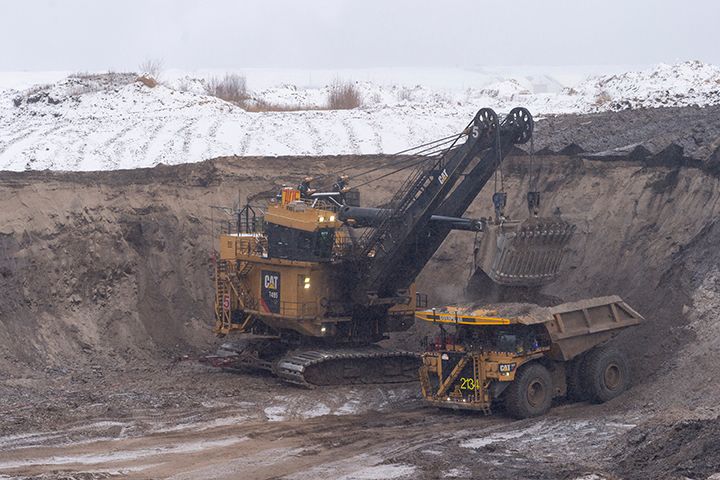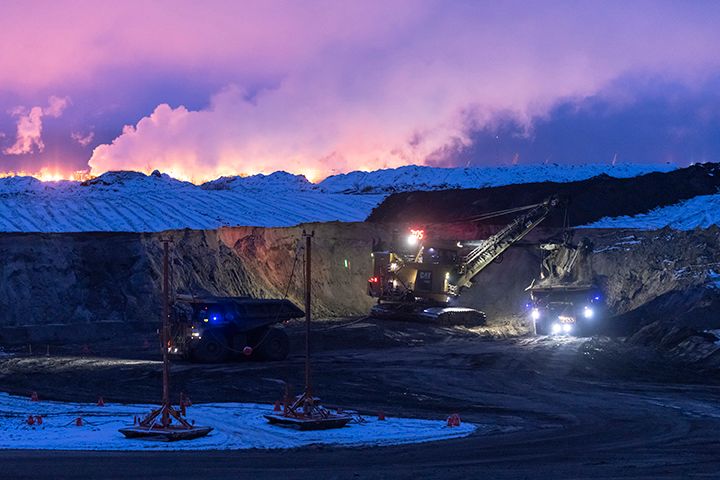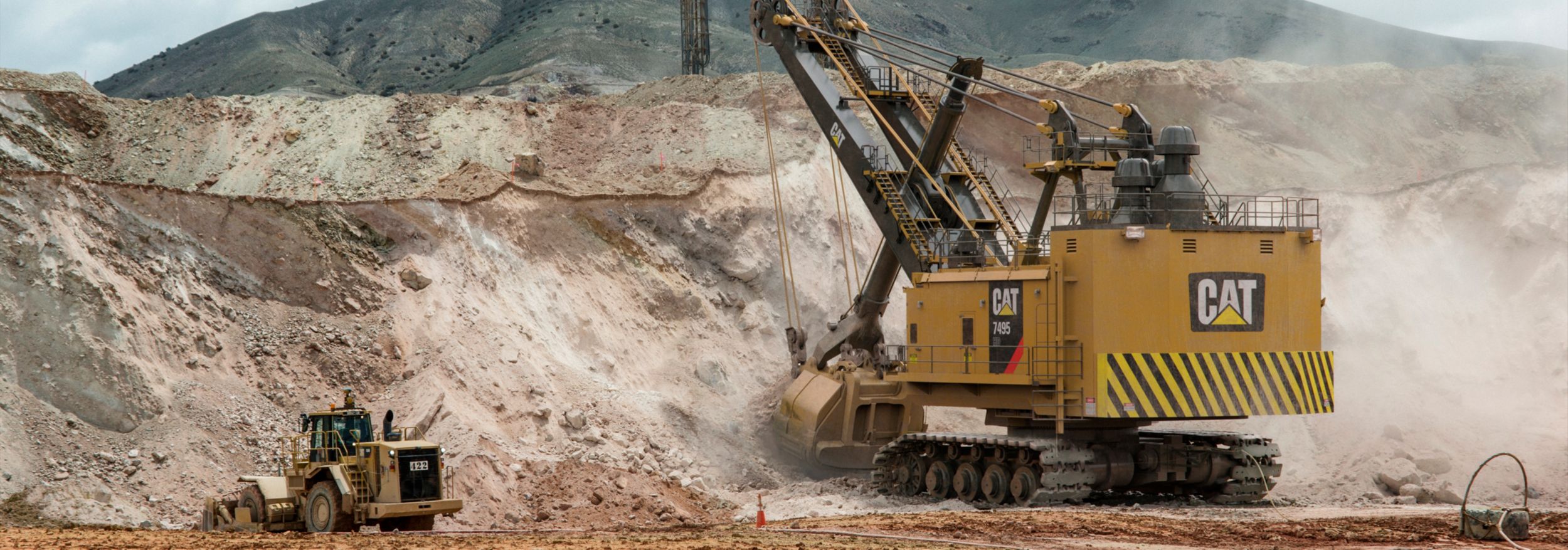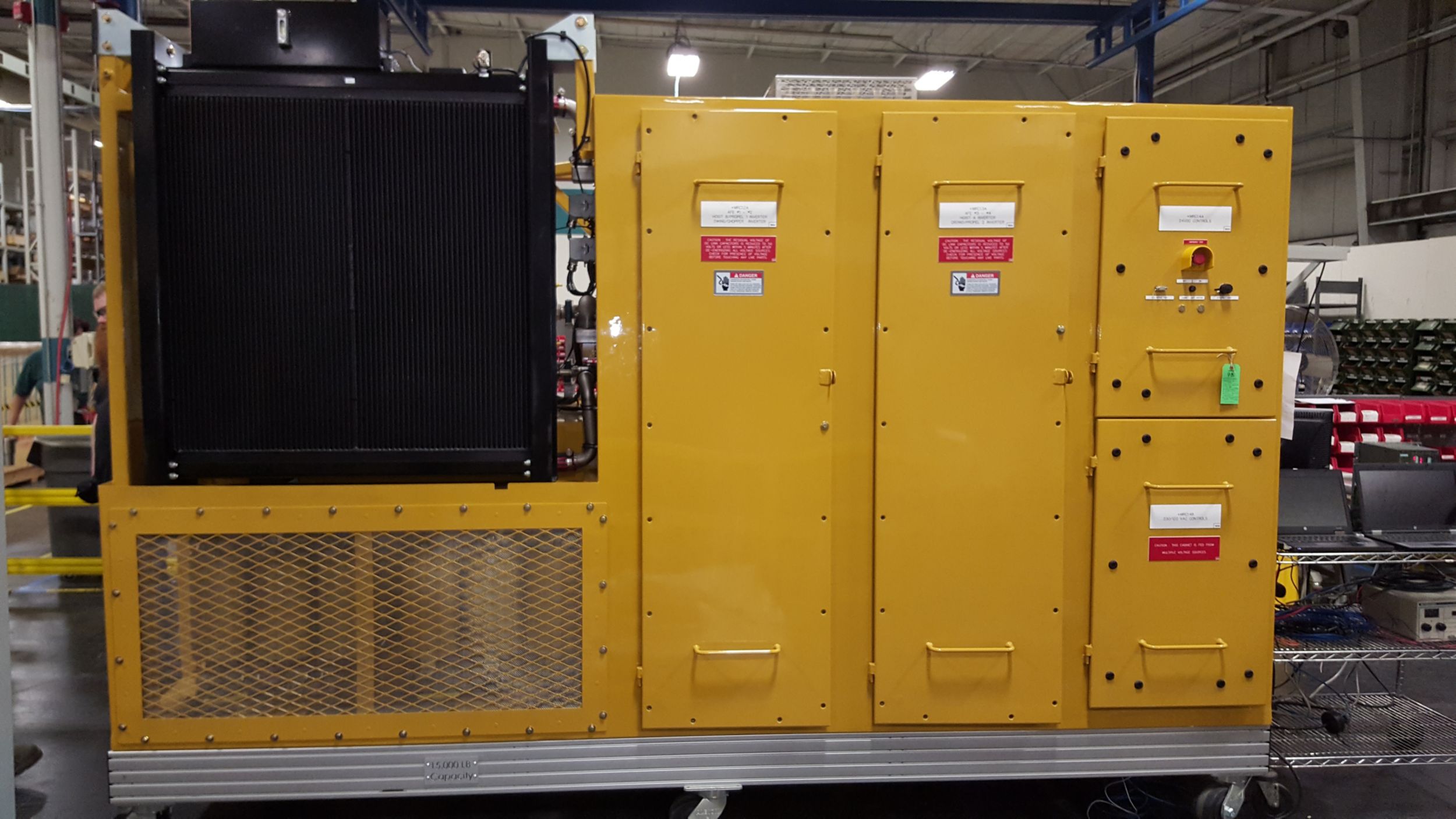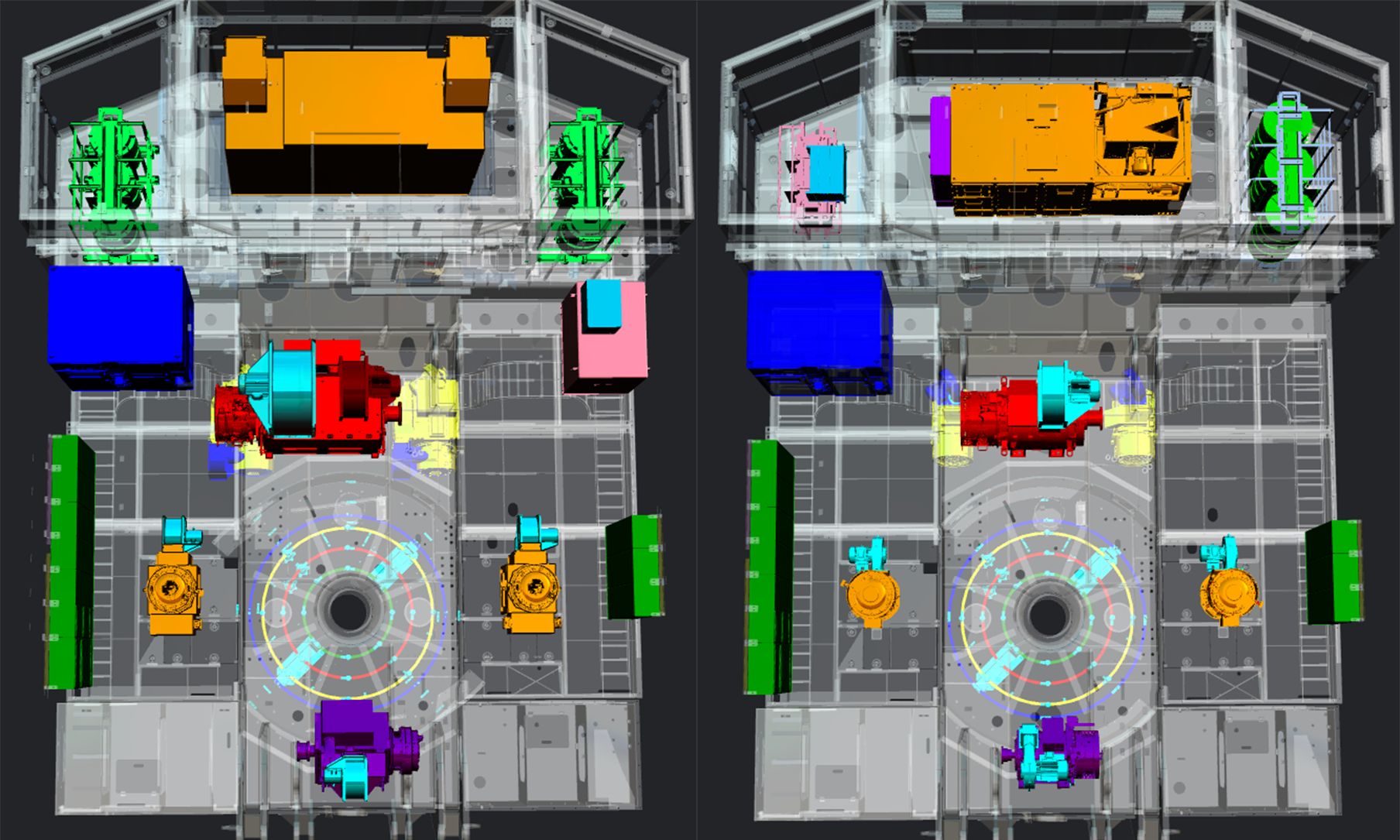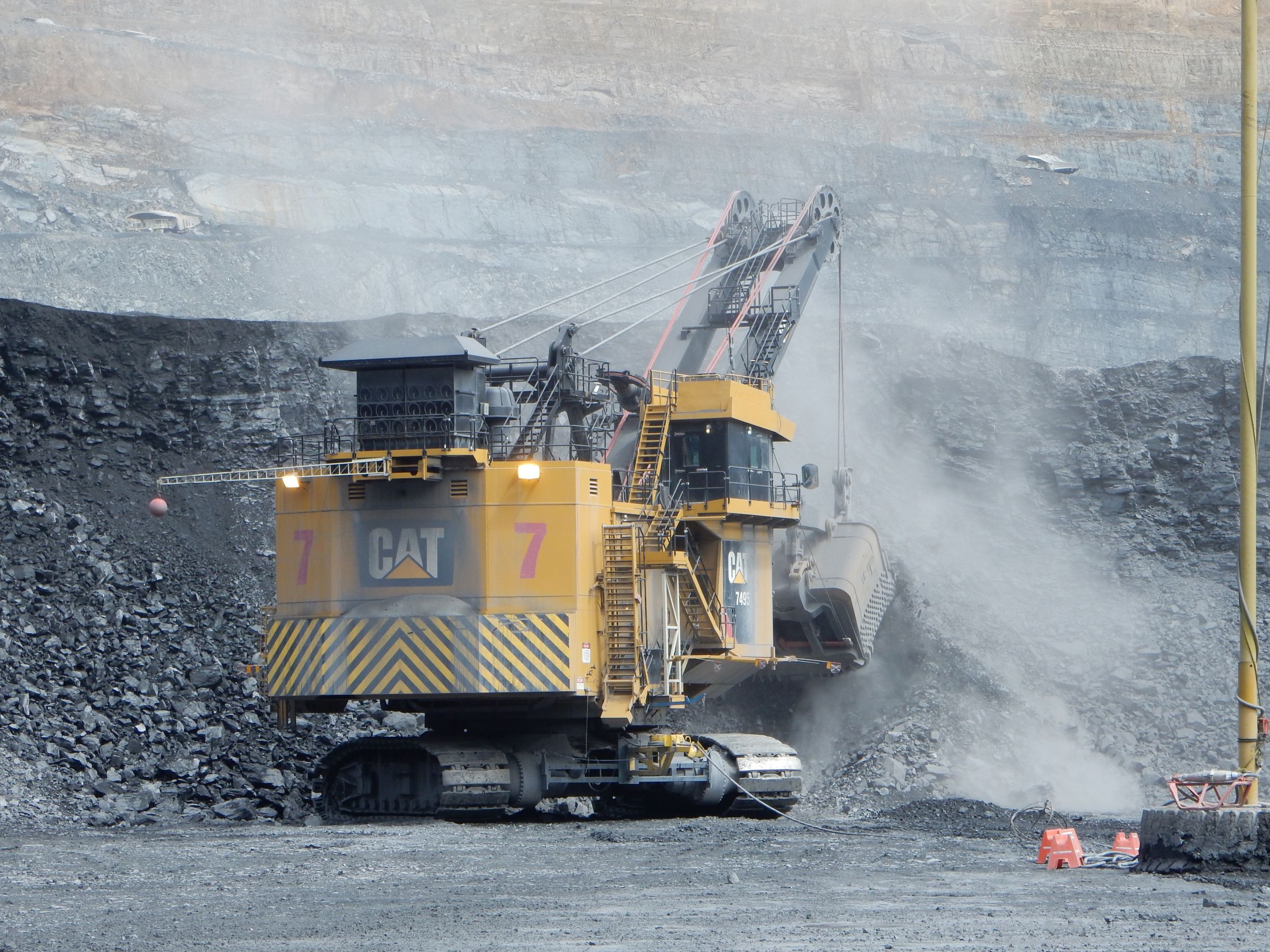If you already have an existing account with another Cat App, you can use the same account to sign in here.
One Account. All of Cat.
Your Caterpillar account is the single account you use to log in to select services and applications we offer. Shop for parts and machines online, manage your fleet, go mobile, and more.
Account Information
Site Settings
Security
Electric Rope Shovels Leading the Way ― and Continuing to Improve
Cat Electric Rope Shovels are built on a legacy of success going back more than 140 years. Learn more about our history — and see where we're going next.
By Caterpillar | Posted May 3, 2023
The electric rope shovels Caterpillar sells today have been leaders in the industry for more than 140 years. While they haven’t always been Caterpillar yellow, they set the standard for efficiency, productivity and reliability in the mining industry.
Today’s rope shovels may not look much like they did in the 1880s, when they were powered by steam. Nor do they look like they did a century ago when the never-ending search for greater efficiency led then-manufacturer Bucyrus to look into electric power.
By the 1930s, they were the first fleet of shovels to be fully converted from steam to electric, but the push for efficiency continued. From DC drive to AC drive to today’s IGBT drive ― Cat® Electric Rope Shovels are built on a legacy of innovation. Continuous improvement never stops.
A HISTORY OF ELECTRIFICATION
As today’s mining industry increases its focus on electrification of equipment to reduce exhaust emissions and boost efficiency, Caterpillar is proud to be the leader in a product that has been electrified for several decades.
“In a way we’ve been leading the charge for over 100 years,” said Mike Haws, technical steward in the Cat Electric Rope Shovel product group. Knowledge gained over these many years has been leveraged throughout the organization and even on customer sites as the industry looks for new ways to more cleanly power the machines essential to production.
Bucyrus helped pioneer the use of electricity as a power source as far back as 1917, though conventional electric motors weren't suitable for shovels. In 1919 Bucyrus offered a new DC electrical power system, known as Ward-Leonard control, which became standard on all electric shovels until the advent of the AC-driven machines.

Bucyrus released the first diesel-driven shovel in 1921 and just a year later launched an electric-drive option. The very last Bucyrus steam shovel sale was a pair of 120-Bs to New York Trap Rock Co. in 1939. In 1979, the company announced the 395-B shovel with breakthrough mining shovel technology. It was the first to incorporate variable frequency AC electric motors and controls called Acutrol.
“There’s no question that Caterpillar is the expert on AC electric drive systems,” said Haws. “We introduced it far earlier than other manufacturers and have produced about three times as many AC drive shovels as our nearest competitor. To date we’ve produced about 325, plus 14 Cat draglines that leverage the system.”

REVOLUTIONIZING THE INDUSTRY
When it comes to gains in rope shovel efficiency, the leap from steam to electric drive was a big one. But the shift to AC drives revolutionized the industry.
AC drive motors are simpler, last longer, require less maintenance, work faster and more efficiently, and deliver greater power than DC drive motors. The result is increased productivity, high availability and lower overall costs.
“DC motors have more moving parts, more mechanical than electrical interfaces,” said Bob Hamann, technical steward responsible for electric drive systems in Caterpillar’s rope shovels organization. “They have more parts that wear, more parts that can fail. They aren’t as tough or resistant to issues as the AC motor is.”
But even the first AC drive systems left room for improvement. “From there we made light-year improvements, from analog to digital Gate Turn Off (GTO) and even bigger improvements with the introduction of IGBT fuseless technology ― a definite competitive advantage for Caterpillar,” said Hamann.
With the original analog drive system, individual components like resistors and capacitors were soldered on boards. To make alterations to the system, someone had to physically remove a component, then solder in a new one and “tune” the system.
“It was very labor intensive, and as time went on, we went away from that system and got into digital controls, using the GTO system,” said Hamann. “That decreased the amount of work that went into it and improved the consistency of the signals.”
Hamann recalls that the analog Acutrol system had about 55 control cards that had to be adjusted. “It was very sensitive and very complicated,” he said. “And then when the GTO drives came out, we joked that it was so simple we could have our CEO at the time commission it. There was only one mechanical adjustment needed. Everything else was digital, essentially done through a computer interface.”
But there were still some shortcomings. “We still had fuses in the system to protect the drive from overloads or over-currents,” he continued. “And then the next generation was the IGBT, which eliminated the fuses because the system reacts so quickly that the protection is built in. It was less a physical fuse and more like a circuit breaker.”
“When IGBT came out, all the adjustments just basically went away and it’s all essentially a computer-controlled system that’s 100% digital,” he continued. “The machines keep getting easier to set up, easier to keep running, and reliability has improved tremendously. There is much less to work on.”
INDUSTRY-LEADING RELIABILITY
What the continually improved AC-IGBT drive system has done for Cat Electric Rope Shovels is make them the leader in reliability. “We’re delivering 98 to 99% drive system availability on these shovels, and that’s unbelievable,” said Haws. “Basically, what we’ve done is take something that was very complicated and difficult to work on and become the experts with it. As technology has evolved, things got simpler and reliability improved.”

“The drive system for Cat Electric Rope Shovels have been refined to the point where we are honestly decreasing our own role,” he continued. “There’s much less to do. We’ve gotten to the point where there really aren’t many problems. That’s why availability is so high.”
If a problem does arise, fixing it is also much easier. “It’s such a simple system, with far fewer components,” said electrical service manager James Giesfeldt. “And we have remote access capabilities, so if something does happen, we can log into the machine remotely instead of flying out to site.”
CUSTOM-DESIGNED FOR MINING
One of the key contributors to the success of the electric rope shovel drive system is the partnership that Bucyrus developed with its supplier and that Caterpillar has maintained. Working together, then-Bucyrus and German manufacturer Siemens custom-designed a system built specifically for electric rope shovels and the rigorous conditions in which they operate.
“When we partnered with Siemens back in the 1970s it put us on the cutting edge of AC drive technology,” said Haws.
For more than 40 years the partnership has had a strong focus on continuous improvement. “Typically, these types of drives have about a 10-year cycle in the industry, and we’ve been able to maintain that pretty well over the years,” Hamann said. “If something new comes out due to obsolescence and improved design, we’re made aware of it and can evaluate it, keeping up with that new technology that’s going to improve reliability.”
Giesfeldt echoed the sentiments of his colleagues. “We’ve been working with our supplier for so long. They know our application and our latest drive system is designed specifically for use on a mining shovel. It’s built to be robust, designed specifically for the application. It’s not some standard off-the-shelf product that we try to put into our applications.”
Electric rope shovels operate in some extreme conditions: very cold weather, very high temperatures and very high altitudes. “We’ve pretty well created a one-size-fits-all drive system,” said Hamann. “It’s built to be shovel-worthy, in all those conditions that get thrown at it.”
How that system is integrated into the rest of the machine is also a key differentiator for Caterpillar. “Everything is integrated,” said Hamann. “Whether it be the programable logic control (PLC) system, motors, transformers, drive system ― it has all been specified to work together as a complete system. We aren’t accepting something off the shelf that could work, but not as well. Everything has been designed specifically for the shovel, with a life of 20-plus years.”
That integration is what makes the shovel as efficient as possible, said Haws. “It’s how we blend the drive system into the rest of the machine to make it work really efficiently. It’s how that control system works with the drive system to make the shovel really sing ― versus just make noise.”
Cat Electric Rope Shovels are also designed to be compatible with the mine site’s power system. “We make sure they can work with the customer’s power system without causing problems. That’s how it has been designed and it’s a key differentiator for us,” said Hamann.
THE ULTIMATE IN ENERGY EFFICIENCY
Since their launch in the 1880s, Bucyrus and now Caterpillar have had an intense focus on electric rope shovel efficiency. And one of the most important benefits of that efficiency, especially in today’s mining industry, is how it helps reduce impact on the environment.
Cat Electric Rope Shovels are extremely energy-efficient tools with zero direct carbon emissions. In fact, they regenerate power.
“It’s all about how to use the power efficiently,” said Haws. “We use a lot of power to move the dirt, but as we’re lowering the handle and dipper, we’re generating power. As we’re swinging and coasting, we’re generating power. So how do we take that power that we’re generating and use it efficiently? We can reuse it in another motion for hoist or swing or crowd, depending on what is required at that time. Or we give it back to the mine in the power grid.”
The search for efficiency never stops. “We’re always looking at ways to use that power more efficiently,” he said. “How do we reduce friction in gear cases, for example, to reduce our energy consumption requirements? We use roller bearings, which are already 99% efficient. But is there a way to reduce the number of roller bearings so we have fewer components and less losses in the system? Those are the types of things we are focused on for the future so we can take the power we have and make it even more efficient.”
“We know this is an enormous issue that our customers are facing, and we want them to know it’s something we’re well aware of,” he continued. “While we are already very efficient, we’re continuing to focus on being better. We clearly have a track record of continuous improvement and delivering a better, more efficient machine. We’re still looking for ways to do more. And you see some of those improvements in our latest generation of shovels.”
UPDATED DRIVE SYSTEM
So how has Caterpillar made an already excellent product even better? The latest Cat Electric Rope Shovels are safer, easier to access and maintain, perform better in extreme conditions, integrate with current and future technology ― and deliver even higher availability.
Since its inception, there have been over 650 improvements made to the 7495,” said Product Manager Flor Rivas. “We’ve made more than 350 in the last decade, and almost half of those have been direct machine enhancements. We’re continually looking for ways to help our customers reduce their cost per ton and improve safety.”
The new electric drive system debuted on Cat 7495 and 7495 HF models. Updates included a liquid-cooled motion regulator cabinet for more efficient dissipation of heat generated by electrical components. The system enables shovels to operate at temperatures of -40 degrees C/F to +50 degrees C (122 degrees F) and altitudes of 5250 meters (17,220 ft) without derating.
“The original drive system was custom designed for mining,” said Haws. “The new liquid-cooled system leverages technology from our partners in the rail industry and delivers even more efficiency. It's been modified for the mining application but is already field tested and perfected in rail.”
A new, faster propel transfer switch cuts lag time by 75 percent for improved productivity. The reliable system also eliminates airborne contaminants and lengthens service intervals — for reduced costs and greater uptime.
New technologies enable consolidating two cabinets in the machinery house to create space for easier maintenance access. The updated maintenance station is designed for integration of existing and future technologies, such as Cat MineStar™ Solutions.


The drive system design uses common motors in multiple applications. New motors have higher power densities, smaller frame sizes and optimized footprints, which aids access. That means fewer parts to stock, improved parts availability and simplified maintenance.
The Cat rope shovel electric drive system still features proven elements such as IGBT modules. And the on-board maintenance station still aids technicians in identifying faults and resolving issues.
The new electric drive system is available on all new production 7495 and 7495 HF shovels. The system is not intended for retrofit, though some elements, such as the fast propel transfer switch, are available as upgrades to existing machines.
“Our customers are responsible for providing the commodities our world needs, and we’re committed to helping them do that more efficiently and safely,” said Rivas “And now more than ever, we’re looking for new ways to reduce the impact those operations have on the environment. Working together, we can build a better world for all of us.”
GET THE LATEST FROM CATERPILLAR MINING DELIVERED RIGHT TO YOUR INBOX

